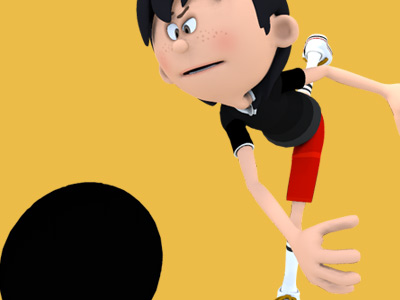Rules and Regulations
The regulations listed here are generally based around regulations set by the United States Bowling Congress — based on the original rules first codified by a USBC predecessor, the American Bowling Congress in 1895 — and the British Tenpin Bowling Association. These rules are followed by all certified leagues and events, such as tournaments. This information is clarified by the World Tenpin Bowling Association in its "Statutes and Playing Rules".
Playing Area
The sport of ten-pin bowling is performed on a straight, narrow surface known as a lane. This bowling lane is 60 feet (18.29 m) from the foul line to the head pin (1-pin). About 15 feet (4.57 m) from the foul line are a set of guide arrows. The lane is 41.5 inches (1.05 m) wide and normally consists of 39 wooden boards (commonly rock maple in the "heads", which is the first 15 feet of lane, and in the pin deck, which begins about 2 feet in front of the head pin; the middle of lane is a softer wood) or a synthetic material. The bowling lane has two sets of approach dots; from the foul line back to the first set of approach dots is about 12 feet (3.66 m) and to the second set of approach dots is about 15 feet (4.57 m) (an additional 3 feet (0.91 m)). Although this figure varies, the lane is protected by about 18 millilitres (0.63 imp fl oz; 0.61 US fl oz) of oil (also known as "the shot"). PBA events use about 30 millilitres (1.06 imp fl oz; 1.01 US fl oz) of oil, and PWBA events use 25 millilitres (0.88 imp fl oz; 0.85 US fl oz). The oil starts from about 4 inches past the foul line and is applied for at least 38 feet (11.58 m) down the lane from that point.
Pins
USBC rules specify that a pin must be 15 inches (38 cm) tall and about 4.7 inches (12 cm) wide at its widest point, where a rolling ball would make contact. There are additional measurements which delineate the shape. The weight of a single pin must be at least 3 pounds 6 ounces and no more than 3 pounds 10 ounces (1.53–1.64 kg). Within a set of ten pins, the individual weights may vary by no more than 4 ounces (113.4 g), if made from wood or plastic coated, or just 2 ounces (56.7 g) if synthetic. The top of the pin shall have a uniform arc with a radius of 1.273 ± 1⁄32 inch (32.33 ± 0.79 mm).
The USBC also has regulations governing the weight distribution of the pin from top-to-bottom. Pins are allowed one or two "voids" (holes) in the belly area (which can be viewed if the pin is cut in half from top-to-bottom). The voids are needed to balance the narrower top half of the pin with the wider bottom half. Without them, the pins would be too bottom-heavy to fall properly when struck. In addition, a standard regulation pin may lean no more than 10 degrees off center without falling.
The pins must show the name and mark of the maker, either "USBC Approved" or "BTBA Approved" and appear uniform.
Bowling Ball
The maximum diameter of the ball is 8.595 inches (21.83 cm) and the circumference of the ball must not be more than 27 inches (0.69 m), and the ball cannot weigh more than 16 pounds (7.26 kg). Generally, the lightest ball available for use is 6 pounds (2.72 kg). The ball must have a smooth surface over its entire circumference except for holes or indentations used for gripping the ball, holes or indentations made to bring the ball back into compliance with weight-distribution regulations, identification letters and numbers, and general wear from normal use.
For much of the history of bowling, bowling balls were made using a three-piece construction method. Starting in the mid-1990s, however, most manufacturers switched to a two-piece method. In response to these innovative ball designs, the American Bowling Congress placed further restrictions on the technical characteristics of the ball such as the radius of gyration and hooking potential.
Rules of Play
A game of bowling consists of ten frames. In each frame, the bowler will have two chances to knock down as many pins as possible with their bowling ball. In games with more than one bowler, as is common, every bowler will take their frame in a predetermined order before the next frame begins. If a bowler is able to knock down all ten pins with the first ball, they are awarded a strike. If the bowler is able to knock down all 10 pins with the two balls of a frame, it is known as a spare. Bonus points are awarded for both of these, depending on what is scored in the next two balls (for a strike) or one ball (for a spare). The bowler is allowed to throw two extra balls for achieving a strike in the tenth frame, or one extra ball for achieving a spare. This allows for a potential of 12 strikes in a single game, and a maximum score of 300 points, a perfect game. The player with the most points at the end of ten frames wins. Although if time runs out before the end of ten frames bowling stops, and the person with the most points wins the game.
SPORTS

RESOURCES
This article uses material from the Wikipedia article "Ten-pin bowling", which is released under the Creative Commons Attribution-Share-Alike License 3.0.
© Stories Preschool. All Rights Reserved.









